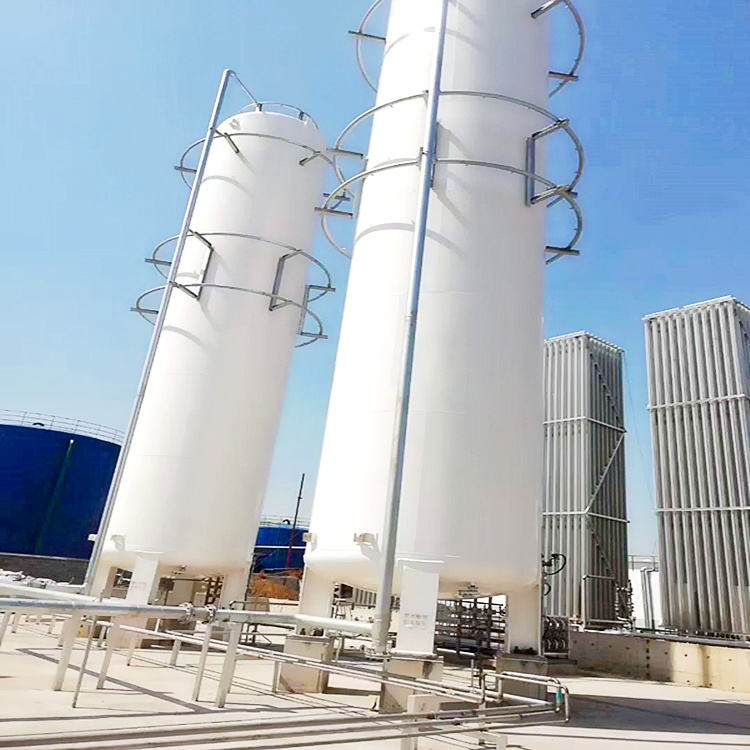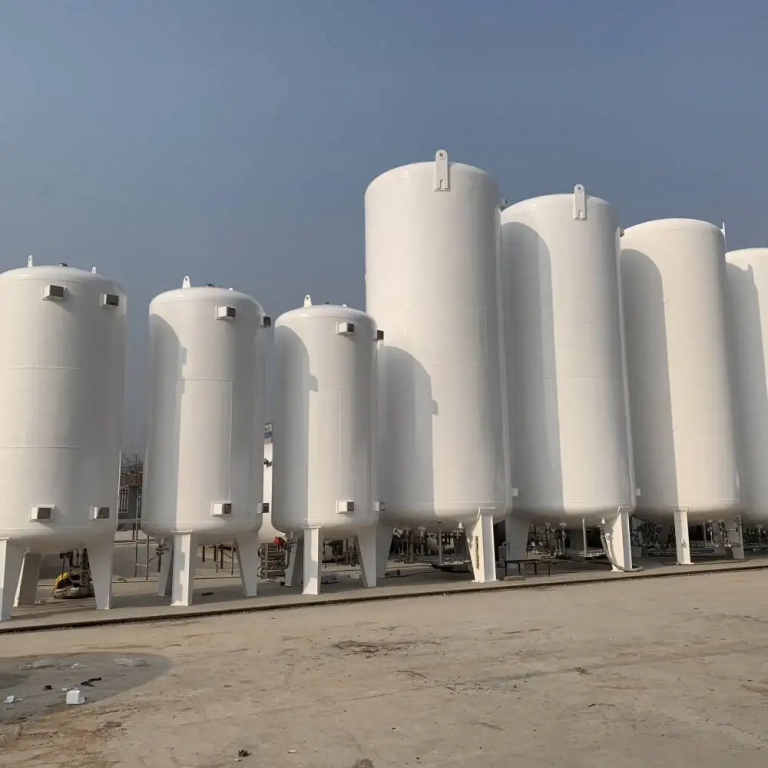Liquid nitrogen storage tanks are classified as cryogenic liquid storage vessels. Nitrogen being asphyxiating, during material input/output and storage processes, hazardous factors include physical explosion, asphyxiation, and frostbite. The primary risks are:

1.Insulation Failure Risk
If insulation facilities are not regularly inspected, frost formation may occur on tank surfaces, hoses, etc., posing frostbite hazards upon accidental contact.
Simultaneously, internal temperature rise could cause rapid vaporization of cryogenic liquid, leading to overpressure explosion risks.
2.Pressure System Hazards
As a pressure vessel, failure to calibrate safety accessories (vacuum pipelines, safety valves, rupture discs) may result in overpressure explosions, asphyxiation, or frostbite.
3.Lightning Protection Deficiencies
Lack of effective lightning protection systems increases risks of lightning strikes and secondary accidents.
4.Operational Protocol Violations
Deviations from standard loading/unloading procedures may cause gas leaks, frostbite, or suffocation.
5.Maintenance Neglect
Prolonged storage without material replacement or delayed maintenance can lead to:
- Leakage due to excessive impurities
- Overpressure explosions
- Fire/explosion incidents
6.Transportation Risks
Severe collisions/vibrations during transport may damage tank integrity, reducing pressure-bearing capacity and triggering explosions.
7.Ventilation System Failures
Over-temperature/pressure scenarios with malfunctioning vent valves or safety accessories (e.g., stuck safety valves) may cause catastrophic explosions.
8.Leakage Consequences
Pipeline/valve leaks not only cause equipment damage (frost-covered shells) but also expose personnel to frostbite/asphyxiation risks.
9.Safety Device Malfunctions
Failed safety valves cannot withstand actual pressure, escalating explosion risks.
10.Non-Compliance Risks
Design/manufacturing/material/installation violations may cause:
- Tank deformation/material leakage
- Asphyxiation/frostbite hazards

11.Foundation Instability
Subsidence/deformation can rupture rigid connections (pipes, valves), causing leaks and associated dangers.
12.Poor Equipment Maintenance
Neglected transfer pumps/pipelines/valves may leak and injure personnel.
13.Weather-Related Damage
Typhoons/severe weather can damage tank farm equipment, triggering secondary accidents.
14.Emergency Access Blockages
Obstructed fire escape routes hinder emergency vehicle access, exacerbating accident severity.
15.Inadequate Purge Procedures
Improper maintenance/tank purging may cause personal injuries.
16.Unsafe Parking Practices
Haphazardly parked tank trucks with insufficient spacing risk:
- Collision-induced fires/explosions
- Disconnected pipes spraying material (causing overpressure explosions, frostbite, or asphyxiation)


